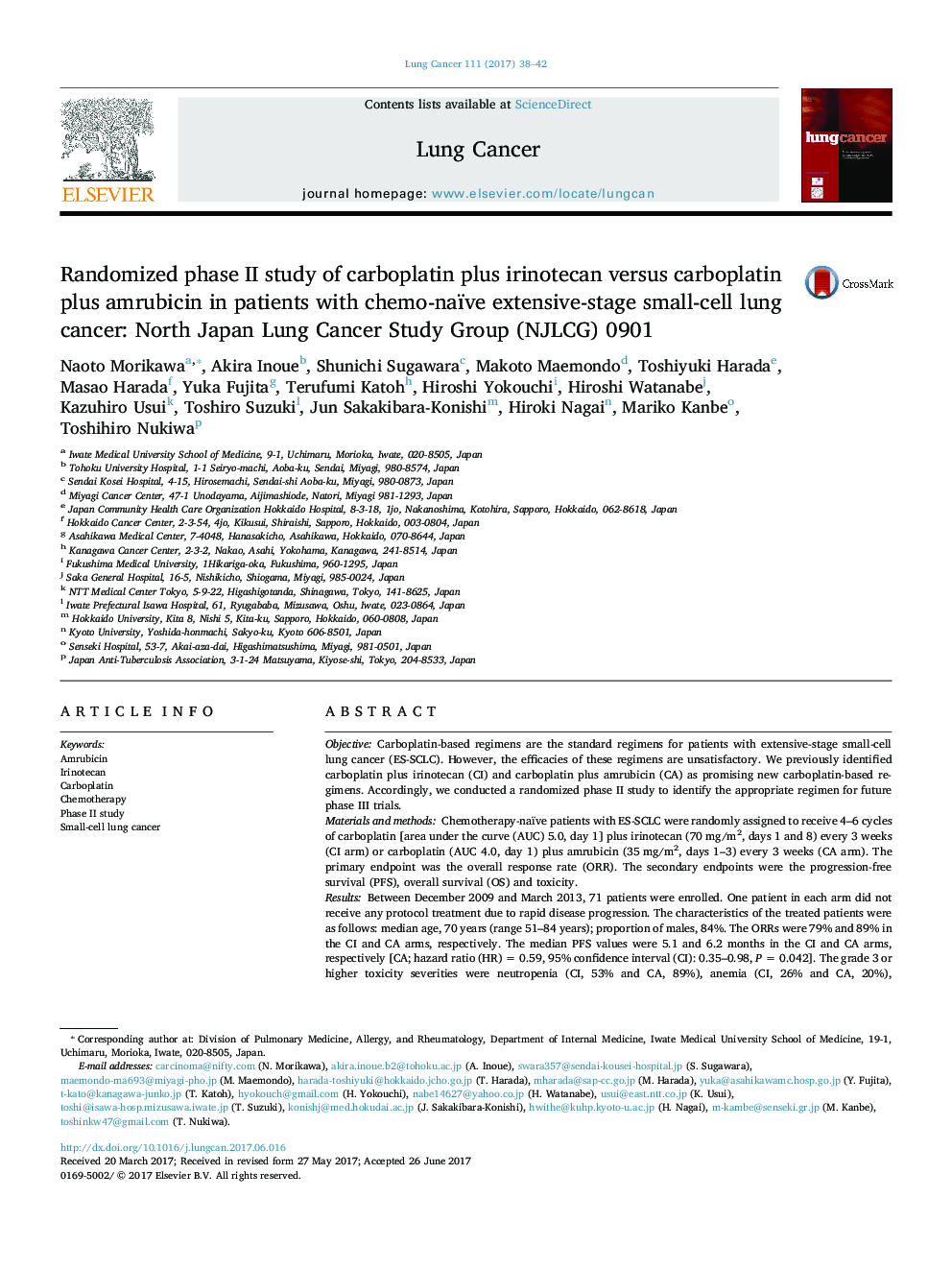| Article ID | Journal | Published Year | Pages | File Type |
|---|---|---|---|---|
| 5528326 | Lung Cancer | 2017 | 5 Pages |
â¢Developing aeffective carboplatin (C)-based regimen for SCLC patients is proposed.â¢This randomized phase II trial compared C/Amrubicin (CA) and C/Irinotecan (CI).â¢CA achieved a longer PFS than CI in patients with extended-stage SCLC.â¢The toxicity was acceptable in both arms, and no grade 5 event was observed.â¢CA is an appropriate regimen for comparison with Carboplatin/Etoposide.
ObjectiveCarboplatin-based regimens are the standard regimens for patients with extensive-stage small-cell lung cancer (ES-SCLC). However, the efficacies of these regimens are unsatisfactory. We previously identified carboplatin plus irinotecan (CI) and carboplatin plus amrubicin (CA) as promising new carboplatin-based regimens. Accordingly, we conducted a randomized phase II study to identify the appropriate regimen for future phase III trials.Materials and methodsChemotherapy-naïve patients with ES-SCLC were randomly assigned to receive 4-6 cycles of carboplatin [area under the curve (AUC) 5.0, day 1] plus irinotecan (70Â mg/m2, days 1 and 8) every 3 weeks (CI arm) or carboplatin (AUC 4.0, day 1) plus amrubicin (35Â mg/m2, days 1-3) every 3 weeks (CA arm). The primary endpoint was the overall response rate (ORR). The secondary endpoints were the progression-free survival (PFS), overall survival (OS) and toxicity.ResultsBetween December 2009 and March 2013, 71 patients were enrolled. One patient in each arm did not receive any protocol treatment due to rapid disease progression. The characteristics of the treated patients were as follows: median age, 70 years (range 51-84 years); proportion of males, 84%. The ORRs were 79% and 89% in the CI and CA arms, respectively. The median PFS values were 5.1 and 6.2 months in the CI and CA arms, respectively [CA; hazard ratio (HR)Â =Â 0.59, 95% confidence interval (CI): 0.35-0.98, PÂ =Â 0.042]. The grade 3 or higher toxicity severities were neutropenia (CI, 53% and CA, 89%), anemia (CI, 26% and CA, 20%), thrombocytopenia (CI, 18% and CA, 14%), and febrile neutropenia (CI, 12% and CA, 29%). No treatment-related deaths were observed.ConclusionCA was numerically more effective than CI, with acceptable toxicity, in chemo-naïve ES-SCLC patients. CA could be selected for future phase III trials.
